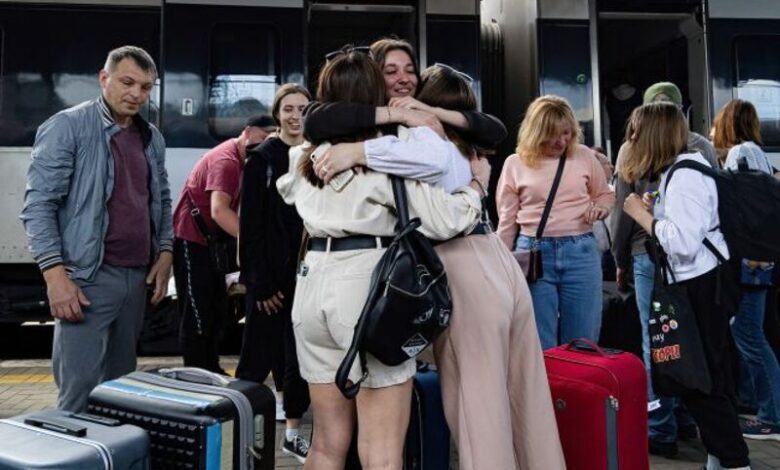About 100 thousand Ukrainians return to Ukraine every six months: how and why does return migration occur?

After the start of the full-scale war, millions of Ukrainians left abroad in search of safety, but some of them are gradually returning. The return process is not a mass one-moment movement, it is a moderate but constant dynamic. Since September 2023, a steady trend has been observed: approximately 100,000 Ukrainians return to the country every six months. These figures were recorded by the International Organization for Migration, which monitors the movement of people and documents the changing routes, decisions and circumstances that force Ukrainians to choose return instead of a long stay abroad.
Geography of refugee return
According to the new research According to the International Organization for Migration (IOM), since September 2023, about 100,000 people have been returning to Ukraine stably every six months. This dynamic of return migration has become an obvious trend, and we are not talking about spontaneous flows, but rather a steady wave of punctuated but consistent returns. According to the results of the study, the vast majority of those who return to Ukraine come from the countries of the European Union — 93% of all recorded cases. In particular, more than a third (36%) of them indicate Poland as their last place of residence. Another 16% — Germany. Smaller flows are observed from the Czech Republic and Italy (5% each), as well as from Moldova, Bulgaria and Romania (3% each).
The rest of the countries from which Ukrainians return have a different geopolitical scale and often a completely different experience of accepting refugees. One percent is returned from each of such countries as Canada, Turkey, Israel, the USA and Georgia. From Azerbaijan, Egypt, Uzbekistan and Tajikistan – less than one percent. Thus, the geography covers the West, the Middle East, and the Caucasus, but Europe remains the undisputed center of attraction for the majority of displaced persons.
The social structure of the return of refugees
IOM emphasizes that the return does not take place in the format of a complete family relocation. More often, we are talking about individual family members – one of the parents, adult children or elderly people. This fact reflects the complexity of the life scenarios in which Ukrainian families find themselves after displacement: some remain abroad with their children, some return to take care of the house, relatives or resume work.
This gap between members of the same family turns into a long-term norm that does not correspond to the usual idea of emigration as a complete process of “departure” and “return”. Instead, a social mode of pendulum presence is being formed: a person lives in several spaces at the same time and makes decisions situationally.
Place of return
Returning Ukrainians rarely go to the frontline regions. The report states that the majority of returns take place in the regions less affected by the war — in the West and in the Central part of Ukraine. This is logically explained by both the security factor and the availability of infrastructure capable of accepting new residents: schools, medical facilities, housing and labor markets.
These regions act as a buffer between the active war zone and post-war stability. Often, those who cannot or do not want to remain in foreign uncertainty, but do not have the opportunity or courage to return to the east or south of Ukraine, often return here.
Reasons for the return of refugees
Despite expectations, housing or employment were not the key motivations for returning. IOM notes that the main factor remains the emotional and identification desire to be at home, with family, in a familiar environment. Material aspects — such as housing or employment — are important, but not decisive.
This explains why even those who in other countries had relative stability, temporary protection or even access to social guarantees return. It turns out that the sense of connection with the native land often outweighs the logic of security or profit.
To some extent, this also speaks of the limitations of adaptation mechanisms abroad. For many Ukrainians, even the best foreign integration systems are not able to compensate for the loss of cultural understanding, language, daily communication and everyday rituals, without which it is difficult to feel “in place”.
IOM emphasizes that the information collected should be used to inform return policies and programs. Stable dynamics require predictable support mechanisms: from resettlement to psychosocial support. If Ukraine receives 100,000 people every six months, state structures and humanitarian organizations must have tools for quick response.
This is especially true for those returning to regions that still bear the scars of war or have strained infrastructure. Forecasting future waves of return will not only allow better management of logistics, but also avoid social tension when there is a lack of schools, housing or medical services at the local level.
The regular return of Ukrainians to the country does not indicate the end of threats, but indicates the persistent desire of individuals and families to restore their presence at home despite the risks and instability. IOM statistics show that the decision to return is not always driven by safety or living conditions abroad. It is often based on individual experience, personal connections, broken family structures, or the weariness of temporality. The uniformity of this dynamic requires a systemic response from the state and international partners: return migration requires no less attention than departure, because people who return leave a stable environment and enter a reality that is still in a state of uncertainty.





